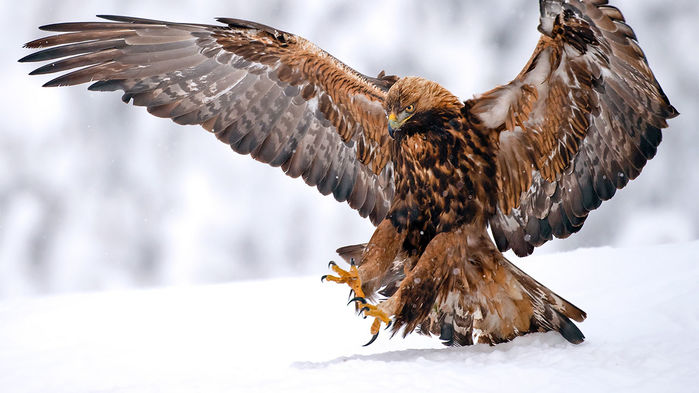Value ‘A wise man‘ Him Bonelli’s eagle I had it easier, unlike golden eagle: a team from the University of Granada shows that our ancestors drastically changed the dynamics between each other Bonelli’s eagles and its main competitors, the golden eagles. However, Today, human activity is seriously endangering the survival of the Bonelli’s eagle..
Spanish and Portuguese scientists led by the University of Granada have unraveled the ancestral history of one of the most iconic birds of prey in today’s Iberian fauna, the Bonelli’s eagle (Striped eagle).
The work, published in the prestigious scientific journal People and natureintegrates arguments from different disciplines, such as paleontology, genetics and ecology, to answer the questions of When the Bonelli’s eagle, a species with a predominantly tropical and subtropical range, colonized the Mediterranean basin, and why.
As Marcos Moleón Paiz, professor at the Department of Zoology at UGR and first author of the article, explains: “Bonelli’s eagle is a ‘newcomer’‘ in Europe. This species probably only started to become established in the Mediterranean 50,000 years ago, while others, such as the golden eagle (A. chrysaetos), have been here long ago, as the fossils show.”
As shown by the spatial analyzes conducted in the study, the Bonelli’s eagleUnlike golden eagleis highly disadvantaged in periods of cold weather.
“During the last ice age, the Bonelli’s eagle could only find refuge in the warm coastal areasand that is exactly where the oldest fossils have appeared,” says Moleón.
Genetic analyzes confirmed that around the last glacial maximum the Mediterranean population of Bonelli’s eagle It must have consisted of a few copies. This ancestral population of Bonelli’s eagles It flourished as temperatures rose in the Mediterranean and the human population grew and became sedentary.
But as Moleón points out, “once the ‘when’ was resolved, we were confronted with the inevitable question of why the Bonelli’s eagle started to settle down Mediterranean in such a complicated period, climatologically speaking. And why was this determined exactly in the last ice age and not earlier?”
The role of Homo sapiens on Bonelli’s eagle populations
According to Moleón, “after testing several alternative hypotheses, all the pieces of the puzzle indicated that the first European settlers of our species (A wise man) played a fundamental role.”
This research used the most complete information available about the competitive interactions that Bonelli’s eagle has with the golden eagle today. This allowed us to confirm that in this relationship The golden eagle is the ‘dominant’ species and the Bonelli’s eagle is the ‘subordinate’ species.. So the results showed that Bonelli’s eagle can survive only in those places where the golden eagle is scarcesomething that mainly happens in highly humanized places.
“Moreover,” Moleón points out, “our mathematical models indicated that: If we could eliminate all pairs of golden eagles in climatically favorable areas, we would expect a sharp increase in the number of pairs of Bonelli’s eagles., but not the other way around. That is also known las Golden eagles can kill Bonelli’s eagles and take over their territories, something that doesn’t happen the other way around.”.
It is notable that the golden eagle is less tolerant of humans than the Bonelli’s eagle.. The authors’ hypothesis is that, with the arrival of the first anatomically modern humans in Europe, some of theThe golden eagle areas closest to human settlements were left abandonedand those ’empty’ areas they began to be occupied by Bonelli’s eagles coming from the Middle East.
“In short,” says Moleón, “Bonelli’s eagle had failed to establish itself in the Mediterranean before the arrival of the first A wise man because the competitive pressure from the golden eagle and other species would then be too ‘suffocating’‘”.
Living close to or far from people?
What Humans are able to change the distribution of species It’s nothing new. The novelty of this study lies in revealing a mechanism called ‘human-mediated competitive release‘, which could allow our species, including our ancestors, to indirectly modify the distribution of other species, including ‘long-lived’ species. “To understand what we observe in nature today, it is often necessary to look to the past” notes Moleón.
However, The advantage that living close to humans once had for the Bonelli eagle has now turned against it.. “Paradoxically, the future of the Bonelli’s eagle in the Mediterranean is currently threatened by the unstoppable intensification of human activities in the environment, which translates, among other things, into power line mortality, prey scarcity and disruption of breeding sites.the authors conclude.

